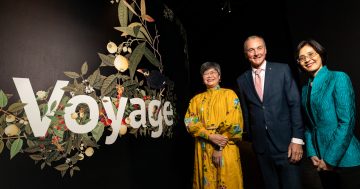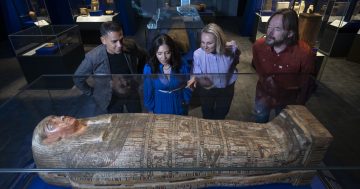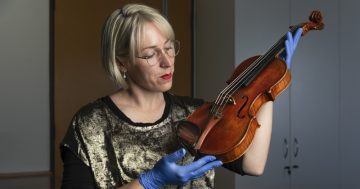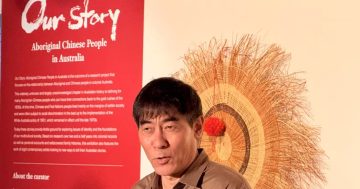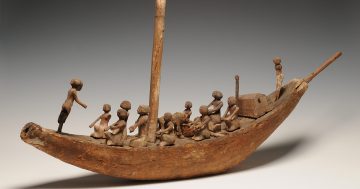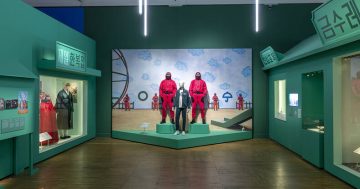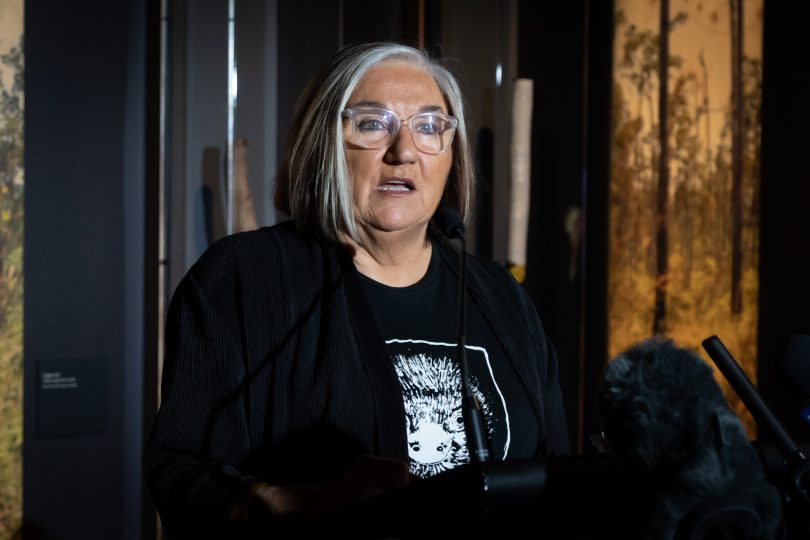
Head of Indigenous Knowledge Curatorial Centre at the NMA Margo Neale: “There is no other sound like that in the world”. Photo: Michelle Kroll.
Visitors to the latest exhibition at the National Museum of Australia will not only experience the sound of the quintessential Australian musical instrument but be able to feel its vibration as well.
Yidaki: Didjeridu and the Sound of Australia promises a multi-sensory, immersive experience that explores the iconic instrument and its origins in northern Australia and importance to the Yolngu people of north-east Arnhem Land.
By standing on innovative musical platforms called thunderboards, visitors can feel the vibrations of the yidaki, as the instrument is known to the Yolngu, as they watch them being played.
The exhibition features 20 key objects displayed in a stringy bark forest setting and moving images, is a collaboration between the South Australian Museum and the Yolngu under the guidance of Djalu Gurruwiwi, a universally recognised authority on the musical and spiritual traditions of yidaki.
Head of Indigenous Knowledge Curatorial Centre at the NMA, Margo Neale said non-indigenous Australians would learn that yidaki, which has spread across the nation and had a tremendous impact overseas, is now also of part their heritage.
Ms Neale said when one heard that distinctive drone you know it’s Australian.
“There is no other sound like that in the world,” she said. “It’s created by country for country to speak to country.”
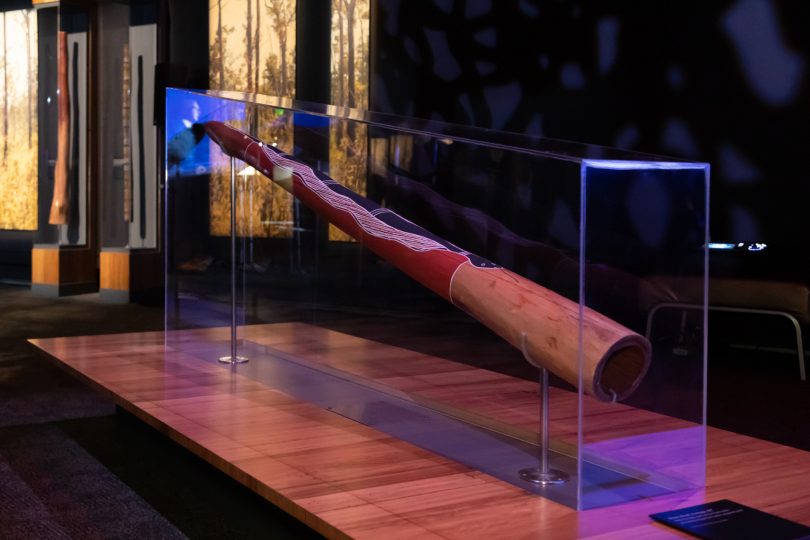
A didgeridoo on display in the exhibition. Photo: Michelle Kroll.
She said that many people would only know the didgeridoo from buskers or the work of William Barton in Australian classical music but this exhibition would show how the instrument is a product of trees hollowed out by termites, the skill in selecting the right limbs and crafting the instrument, and its place in the ceremonial, spiritual, social, healing, storytelling and diplomatic life of the Yolngu.
“Mostly it will overturn that view that this instrument denotes the primitivism of Aboriginal people,” Ms Neale said.
“Like most of our culture, particularly the Ylongu mob, it’s very sophisticated.”
Ms Neale said the deep-throated sound would have to be the most enduring expression of how ancient this land is, and an indication of the long human occupancy of this land.
She said the instrument had been embraced when taken overseas by the likes of Uncle Bob Randall of Brown Skin Baby fame, although some had complained that Indigenous culture had been appropriated.
“But he was thrilled that an instrument from our culture was actually appreciated and valued as a really fine musical instrument,” Ms Neale said.
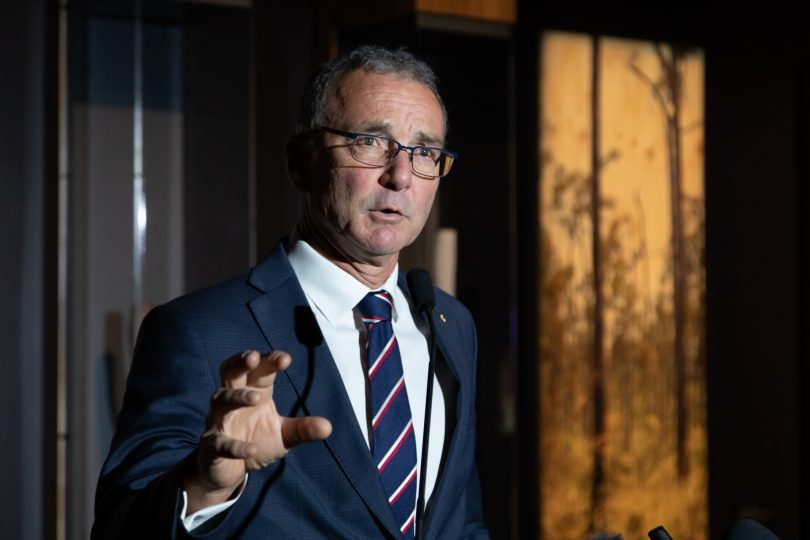
NMA Director Dr Mathew Trinca: “Sense then vibration”. Photo: Michelle Kroll.
NMA Director Dr Mathew Trinca said the exhibition was unlike any other the museum had staged.
“It’s an opportunity in this exhibition to feel the sense of vibration this instrument generates as much as the sound that one can hear,” he said.
“It is this feeling as much as the sound that you hear that is the true history, true quality of yidaki that seems to be so intricately linked to the spirit of this land.”
The SA Museum holds one of the greatest collection of yidaki in Australia.
The exhibition will be on show in the Temporary Gallery from 25 June until 26 September 2021. The national capital is the final leg of an international tour.
Original Article published by Ian Bushnell on The RiotACT.



